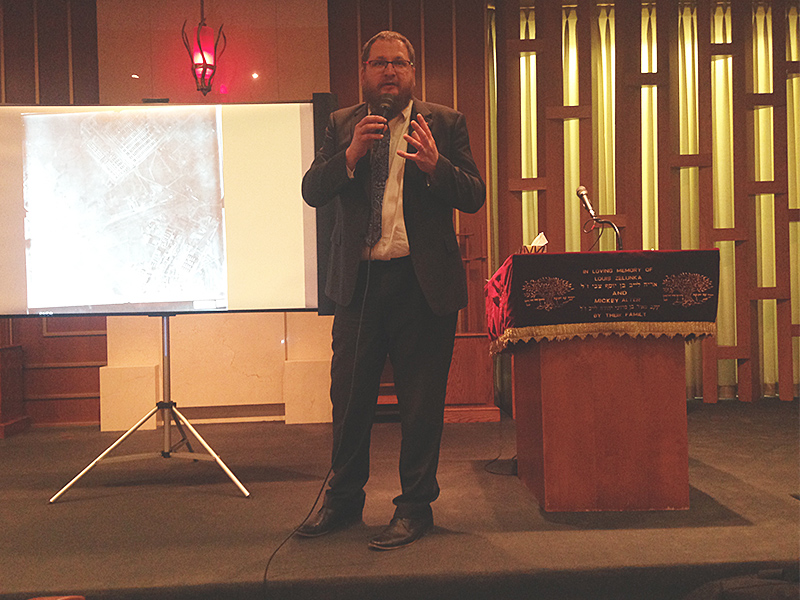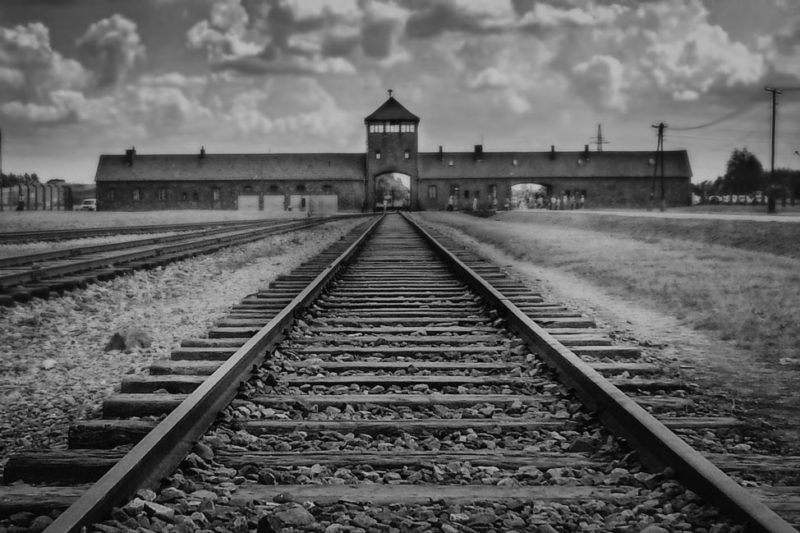TORONTO – Preservation of authenticity has been the main focus of efforts at the Auschwitz-Birkenau State Museum for almost the past decade, explained the museum’s director, Piotr M.A Cywinski, at a Feb. 22 lecture at Beth Sholom Synagogue
The Polish historian, who is also a co-founder of the International Centre for Education about Auschwitz and president of the Auschwitz-Birkenau Foundation, addressed a crowd of about 240 people – some of whom identified themselves as Holocaust survivors – about the importance of educating younger generations about what took place at Auschwitz-Birkenau and the challenges associated with preserving items at the site of the former Nazi concentration and extermination camps.
Cywinski, who’s been the museum director since 2006, said that in contrast to a number of other concentration camp museums, Auschwitz-Birkenau emphasizes visitors’ experience of the physical remains of the camp – the barracks, what’s left of the gas chambers and crematoria, but also items such as survivors’ shoes, suitcases and glasses – rather than on formal symbols of commemoration erected after the Holocaust.
READ: THE CASE OF THE UNLIKELY HOLOCAUST SCHOLAR
For example, he said, at Mauthausen, a former concentration camp in Austria, the entrance is filled with monuments from a host of countries, while buildings inside are covered in commemorative plaques.
“If you read too many monuments, you don’t remember anything… with the plaques, you read a few and then you skim some, and then you stop reading them,” Cywinski said.
In Majdanek, a former camp on the outskirts of Lublin, Poland, visitors access a large monument via the camp’s periphery, meaning, he noted, “You can have an official ceremony [of remembrance] without even entering the authentic site of the camp.”
In Birkenau, “the access of commemoration corresponds to the historical way taken by the victims,” Cywinski said. Visitors enter the camp’s main gate and proceed to walk along the infamous ramp where prisoners were unloaded from cattle cars and arrive at a monument situated between two former gas chambers.

While all official ceremonies of commemoration still happen at a monument built in 1967, from which the gas chambers can’t be seen, Cywinski said, “This is something we will maybe change one day.”
He’s observed that visitors’ “private commemorations,” such as flowers, stones or pieces of writing, are often placed on a wagon located on the ramp, to remember the prisoner transports.
“This shows people aren’t coming to see an organized space of remembrance… They want to experience the past, not something that was later created by architects,” he said.
Numerous artists have proposed building installations at Auschwitz-Birkenau, but, good intentions notwithstanding, Cywinski believes it would detract from the museum’s impact.
“The silence of Birkenau, its emptiness… that disturbs people. They want to give sense, logic, to the site, as well as to the history, but there is no logic.”
Showing a photograph of a child prisoner’s small shoe, he said, “This is what makes people think about the humanity of the victims. Not amazing constructions or multimedia.”
He noted in the 1950s, it was primarily survivors who were non-Jewish political prisoners in Auschwitz-Birkenau who decided to have the main exhibition not simply tell the history, but show it.
Regarding the technical work of preserving relics, which the museum has undertaken in full force in the past few years, Cywinski explained that it’s a serious and often challenging endeavour.
Victims’ suitcases, for example, are difficult to preserve, because they’re made of a number of different materials, and often include things such as inscriptions or stickers from hotels, which show that, “before the war these people were living normally,” Cywinski said.
READ: EXCERPT – THE LAST TRIP TO AUSCHWITZ
The 45 women’s barracks, he added, have proven the hardest buildings to preserve, because they were poorly constructed – built as they were by prisoners – and the museum has had to find specialists from around the world to keep the barracks from collapsing.
The motivation behind these comprehensive efforts is to ensure that young people from all over the world – and non-Jews in particular – understand the horrors that took place in Auschwitz-Birkenau, Cywinski said.
“It’s not just a question of the past, but of turning to the future. Because this preservation is the only thing we can give to our children and our children’s children.”
